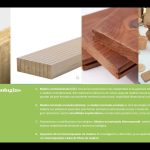In today’s fast-paced digital world, content creation is one of the most powerful tools for building a personal or business brand. However, with so much content being generated every day, it can be difficult to stand out and maintain a consistent output. This is where having a structured content strategy becomes essential. Building a mini content system can help streamline your efforts, maximize your impact, and save time.
In this article, we’ll explore how to create your own mini content system, break down its core components, and explain how this system can help you achieve your content goals efficiently. Whether you are a beginner looking to start your content journey or a seasoned creator trying to refine your process, this system can be a game-changer.
What is a Mini Content System?
A mini content system is a simplified and effective strategy for planning, creating, and distributing content that aligns with your personal or business goals. It helps ensure that your content creation process remains organized, intentional, and impactful, without overwhelming you with unnecessary complexity. The goal of a mini content system is to focus on producing high-quality content consistently while minimizing stress and time spent.
By designing a mini content system, you are essentially laying out a plan to streamline your content creation efforts, making it easier to produce and share content that resonates with your target audience.
Key Components of a Mini Content System
To build your mini content system, you need to understand and implement the following essential components:
1. Content Planning
The first step in building your mini content system is planning. Having a clear strategy will guide the type of content you produce, how often you publish it, and where you distribute it. A content plan helps you align your efforts with your business goals or personal brand objectives.
Start by identifying your audience and understanding their needs, challenges, and interests. Then, create a content calendar to schedule posts, videos, blogs, or other media types consistently. By planning your content in advance, you can ensure a steady flow of ideas without scrambling at the last minute.
Some tools that can help with content planning include:
-
Google Calendar or Trello for scheduling and tracking deadlines.
-
Content management platforms like Buffer or Hootsuite for planning social media posts.
-
Evernote or Notion for organizing ideas and notes.
2. Content Creation
Once you have your plan in place, the next step is content creation. The goal here is to create valuable content that engages your audience and serves your purpose, whether it’s educational, entertaining, or informative.
To make the content creation process efficient, consider the following:
-
Repurpose content: A mini content system allows you to repurpose one piece of content in various formats. For example, a podcast episode can be turned into a blog post, social media snippets, or a video. This saves time while expanding your reach on multiple platforms.
-
Batch creation: Set aside time to create multiple pieces of content in one go. Batch production helps you stay ahead of deadlines, reduce stress, and avoid last-minute scrambling.
-
Focus on quality over quantity: While consistency is key, it’s crucial to prioritize creating content that adds value. High-quality content that resonates with your audience will be more effective than churning out a large volume of mediocre material.
3. Content Distribution
After creating your content, you need to distribute it effectively. Content distribution involves getting your content in front of the right people and ensuring that it reaches your target audience.
To make distribution part of your mini content system, consider the following:
-
Use multiple channels: Distribute your content on various platforms where your audience is most active—social media, blogs, newsletters, or podcasts. By spreading your content across different channels, you increase your chances of reaching a wider audience.
-
Leverage automation tools: Tools like Buffer, Hootsuite, and Later allow you to automate social media posting and ensure that your content is distributed at optimal times, increasing engagement.
-
Engage with your audience: Respond to comments, messages, and feedback on your content. Engagement helps build a relationship with your audience and increases visibility on platforms like Instagram, YouTube, or LinkedIn.
4. Content Evaluation
Evaluating the effectiveness of your content is crucial for refining your mini content system. This step involves measuring your content’s performance, analyzing what works, and adjusting your approach accordingly.
Here are a few ways to evaluate content success:
-
Track key metrics: Use analytics tools such as Google Analytics, social media insights, or YouTube Analytics to measure traffic, engagement, and conversion rates.
-
Monitor audience feedback: Pay attention to the comments and feedback from your audience. Their responses will help guide future content creation.
-
A/B testing: Test different types of content (such as headlines, formats, or visuals) to see what resonates best with your audience. A/B testing allows you to optimize your content strategy over time.
5. Consistency and Routine
The cornerstone of any successful mini content system is consistency. A regular posting schedule will help you build momentum and keep your audience engaged. Even if you’re not posting daily, make sure you are maintaining a steady flow of content across your chosen platforms.
Incorporating routines into your content system ensures that you don’t overlook the small details. Set aside time each week to plan, create, distribute, and evaluate your content. Developing a sustainable routine will keep your content production consistent without overwhelming you.
Why a Mini Content System Works
A mini content system works because it simplifies the often-overwhelming process of content creation. Instead of trying to keep track of multiple complex systems, this approach allows you to focus on the most essential components—planning, creating, distributing, and evaluating content. The mini content system helps to:
-
Increase efficiency: With a clear structure, you can minimize wasted time and focus on producing quality content.
-
Stay organized: By planning your content in advance, you ensure a steady stream of posts, eliminating last-minute stress and panic.
-
Track progress: With regular evaluations, you can see what’s working, what isn’t, and where improvements can be made.
-
Enhance engagement: When content is consistent, well-crafted, and relevant to your audience, it naturally leads to higher levels of engagement and connection.
Tips for Building Your Own Mini Content System
-
Start Small: If you’re new to content creation, begin with a simple system. Focus on one platform and a few types of content, then scale up as you become more comfortable.
-
Repurpose Your Content: Repurposing is a great way to make the most of your efforts. Turn a blog post into a video or break it down into several social media posts.
-
Stay Consistent: Consistency is key. Aim to post on a regular schedule, whether it’s once a week, twice a month, or more often, depending on your capacity.
-
Be Flexible: While a system provides structure, allow room for flexibility. If something isn’t working, don’t be afraid to adapt your strategy.
-
Use Automation Tools: Leverage scheduling and automation tools to streamline your content distribution process, so you don’t have to manually post every time.
Conclusion
Building a mini content system is a smart way to make content creation easier, more efficient, and less overwhelming. By organizing your process into clear steps—planning, creating, distributing, and evaluating—you can produce content that resonates with your audience while staying on track and avoiding burnout. Whether you’re building your brand, growing your business, or simply sharing your ideas, having a structured approach to content creation can help you achieve consistent results.
For more insights and guidance on building your own mini content system, be sure to watch this video: Build Your Mini Content System.


